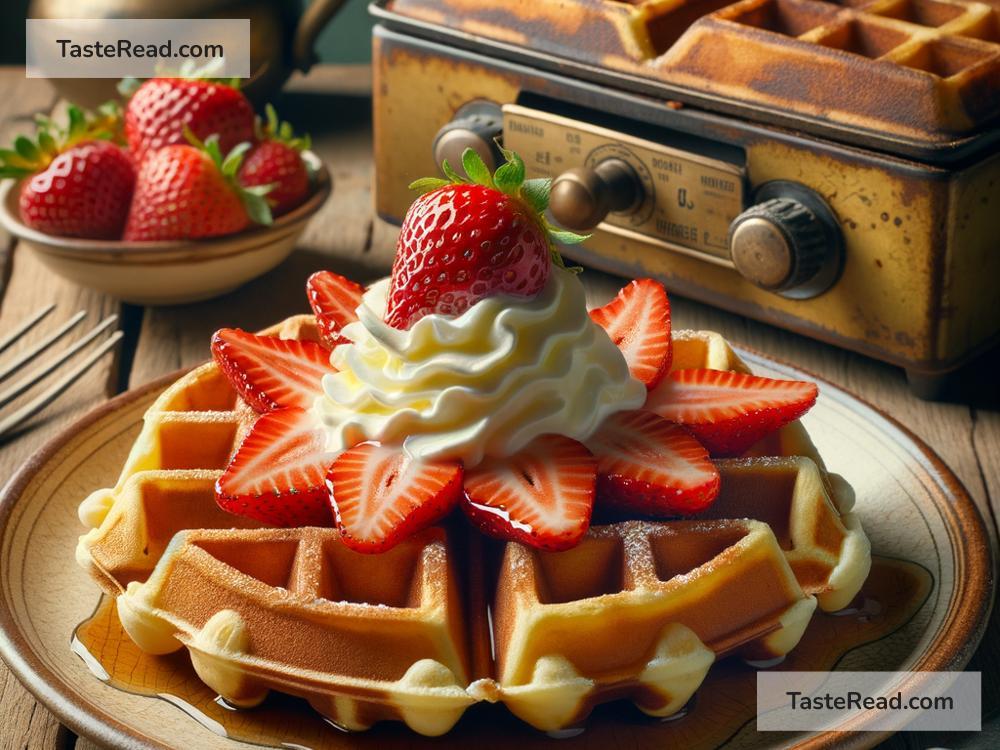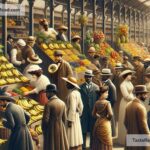The History of the Belgian Waffle
When you think of delicious, fluffy waffles, it’s hard not to imagine a Belgian waffle piled high with fruit, whipped cream, or syrup. Belgian waffles are beloved all over the world, but where did they come from? How did they become the breakfast and dessert favorite we know today? Let’s take a journey into the fascinating history of the Belgian waffle.
The Origins of Waffles
Waffles have been around for centuries. Their name comes from the Old French word “wafel,” which means “honeycomb” or “woven,” referring to the waffle’s textured grid pattern. The first versions of waffles can be traced back to ancient Greece, where people cooked flat cakes between hot metal plates.
By the Middle Ages, waffles were more common in Europe. Bakers used iron molds to make thin cakes shaped like religious symbols or designs. These early waffles were simpler but paved the way for the waffles we eat today.
Belgium’s Unique Waffle Tradition
Waffles became very popular in Belgium. Belgian bakers developed their own recipes using yeast or beaten egg whites to make them light and airy. Unlike the thinner and crispier waffles found in other countries, Belgian waffles were thick, fluffy, and soft on the inside while crispy on the outside. They were a delicious street snack, often sold at fairs or markets.
In Belgium, there isn’t just one type of waffle. Two main styles became famous:
-
Brussels Waffle: This style is what many people think of as the Belgian waffle today. It’s rectangular, light, and airy, often served warm with toppings like powdered sugar, whipped cream, fruit, or chocolate.
-
Liège Waffle: The Liège waffle is denser and sweeter. It’s made with a dough that contains pearl sugar, which caramelizes as it cooks. This creates a thick, golden crust with a sugary crunch. Liège waffles are more like a dessert and are often enjoyed plain because they’re naturally sweet.
How Belgian Waffles Came to America
Belgian waffles entered the global spotlight during the mid-20th century. The first big introduction happened during the 1964 World’s Fair in New York City. A Belgian man named Maurice Vermersch and his family brought their famous Brussels-style waffles to the fair. These waffles were slightly modified for American taste—they were bigger, sweeter, and served with lots of toppings.
When Maurice served the waffles, he didn’t call them “Belgian waffles” at first. The original name was “Brussels waffles.” However, Vermersch quickly realized that many Americans didn’t know where Brussels was. To make it easier for people to remember, he started calling them “Belgian waffles” instead.
The Belgian waffles were a huge hit at the World’s Fair. People couldn’t get enough of their fluffy texture and delicious toppings. They became famous overnight, and soon the idea of Belgian waffles spread across the United States and other parts of the world.
Growing Popularity Worldwide
After the World’s Fair, Belgian waffles became a sensation in America. Restaurants, diners, and cafes began serving them alongside traditional breakfast staples like pancakes, bacon, and eggs. Home cooks started making them using waffle makers, which had become widely available.
Over time, Belgian waffles evolved to suit local tastes. In many countries, they’re made with baking powder instead of yeast, which makes them easier to prepare. Toppings vary based on regional preferences, with choices like strawberries, ice cream, Nutella, or savory ingredients like fried chicken.
Belgian waffles are also popular at fairs and festivals because they’re easy to eat on the go. You can now find them everywhere, from casual diners to gourmet restaurants.
Belgian Waffles Today
Today, Belgian waffles are considered a classic breakfast and dessert option. They’re loved not just in Belgium but around the world. While you can still find authentic Belgian waffles in Belgium that follow traditional recipes, it’s common for people to adapt them.
Some creative chefs have taken Belgian waffles to new heights by experimenting with unique flavors and combinations. You might see waffles made with matcha, red velvet, or even waffle sandwiches stuffed with savory ingredients.
Fun Facts About Belgian Waffles
- The original Brussels-style waffle sold at the World’s Fair cost only $1.
- In Belgium, waffles are often eaten as a snack, not breakfast.
- The Liège waffle is sometimes called the “sugar waffle” because of its caramelized sugar crust.
Conclusion
The Belgian waffle is more than just a tasty treat—it’s a piece of culture and history. From its humble beginnings as a street snack in Belgium to its international fame at the World’s Fair, the Belgian waffle has become a symbol of comfort and deliciousness.
Next time you bite into a warm Belgian waffle topped with your favorite syrup or fruit, take a moment to appreciate its journey. Whether you’re eating it for breakfast, dessert, or as a snack, one thing is clear: Belgian waffles are here to stay!
What’s your favorite way to enjoy Belgian waffles? Share your toppings and stories in the comments below!


